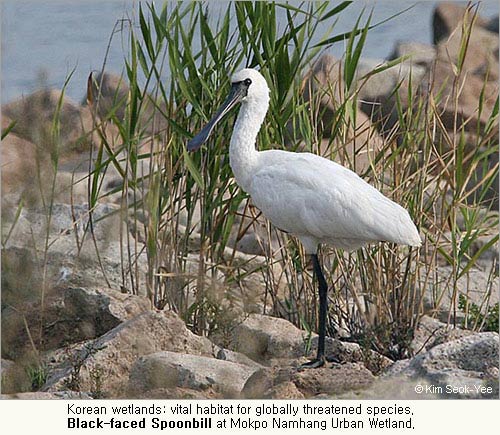This Update covers August 1st to September 30th 2009. It is in three parts:
“Healthy Wetlands, Healthy People”
Ramsar in Korea One Year On.
It is now a year since Changwon City hosted the Tenth Ramsar “Wise Use of Wetlands” Convention Conference of the Parties (Ramsar COP 10).
Wetlands - tidal-flats, marshes, rivers, even reservoirs and rice-fields - are the most important habitat in the Republic of Korea for globally important bird biodiversity. The majority of globally threatened bird species in Korea depend on wetlands; and the largest concentrations of birds are also found at wetlands, making a few such places extremely popular with people at weekends or during special Bird Festivals.
Understanding of wetlands, and of the waterbirds that migrate to and from them each year, continues to increase year by year. This understanding has helped public attitudes towards conservation become more and more positive. Illegal hunting of waterbirds, uncommon a decade ago, appears to be even less widespread now, and according to Professor Hwang Ah-Ran of Pusan National University, 80% of all people when answering a recent poll supported the statement that "In planning development projects, environmental conservation should take precedence over economic gains". (see Korea Herald).
There is clearly broad popular support for conservation of wetlands and for genuinely sustainable development of the type as defined clearly in the Millennium Development Goals.
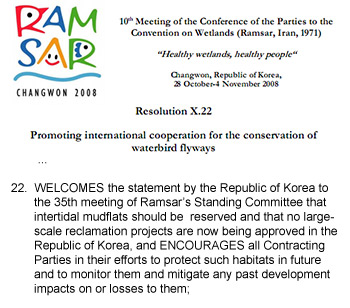
In the run-up to and also during Ramsar COP10 (October 28th-November 4th, 2008) positive media coverage of wetlands and waterbirds further increased this popular awareness and support for conservation. Three additional Ramsar sites were designated (taking the national total to eleven), and plans to develop a Regional Ramsar Centre for East Asia also evolved, becoming more fully realised this year.
At the Ramsar COP 10 itself, solid progress was also made. Ramsar is an intergovernmental convention and the decisions of the convention are expressed through Resolutions, agreed to by all member nations. There was unanimous support for example for Resolution X.22 ( that included “the statement by the Republic of Korea… that intertidal mudflats should be preserved and that no large-scale reclamation projects are now being approved in the Republic of Korea”); for Resolution X.27, calling for all nations to review the state of their urban wetlands and to put in place schemes for their restoration and rehabilitation as needed, and to formulate their land-use planning and management in such a way as to minimize any future impacts on urban wetlands; and for Resolution X.03 (“The Changwon Declaration on Human well-being and Wetlands” ).
The Changwon Declaration targets decision-makers, and clarifies why wetlands need to be conserved. It calls for:
“Decision-makers to stop our wetlands from becoming degraded or lost”;
“Decision-makers to restore our wetlands that are already degraded - this offers us an efficient and cost-effective means of increasing ground and surface water storage, improving water quality, sustaining agriculture and fisheries, and protecting biodiversity”;
“Decision-making [that] should, wherever possible, give priority to safeguarding naturally functioning wetlands and the benefits they provide.”
A year on from Ramsar COP 10 how much progress has been made by decision-makers towards reaching the agreed ideals of the Changwon Declaration?
A review of the Ramsar List reveals that since the Ramsar COP10 no new Ramsar sites have been designated in the Republic of Korea. We therefore still have only 11 Ramsar sites nationwide, totalling a mere 8,215 ha - a little over one fifth the area of the massively destructive Saemangeum reclamation project, and less than twice the area of the reclamation undertaken for the Incheon Free Economic Zone.
At present, we rank only 49th on the Ramsar list in terms of the number of Ramsar sites designated. Both China and Japan have 37, while previous Ramsar COP nations include Australia (with 65 Ramsar sites) and Spain (with 63). Worse still we are presently a dismal 130th out of 159 member nations in terms of actual area of Ramsar site (measured in hectares) - a rank almost unchanged since 2007.
Why is this? There is abundant recent talk about the merits of Green Finance and Green Growth, and after decades of hard work and self-sacrifice, the Republic of Korea already lies between 24th and 30th in the World Bank’s 2008 global ranking of GDP (i.e. we are a rich nation financially). As a nation we can afford to set up and maintain protected areas and Ramsar sites, and to fund management plans and even compensation schemes where needed. It is clearly not a lack of money that is preventing progress.
It is also not because of the size of national territory. Portugal, for example, is similar in land area (as well as economic rank) to the Republic of Korea, yet it has almost three times as many Ramsar sites covering an area that is more than ten times larger - 86,581 hectares.
Furthermore, the lack of Ramsar site designation is also clearly not because there are too few wetlands here that meet the Ramsar criteria. Probably twenty or more wetlands nationwide that are already well-known as internationally important for waterbirds still remain unlisted, including Joonam Reservoir in Changwon, the Geum Estuary, Namyang Bay (Hwaseong), Yeonjong tidal-flats, the Nakdong Estuary (now threatened further by a Busan City plan to repeal half of the estuary’s protected status), Song Do tidal-flats, and the Seosan reclamation lakes and rice-fields, as well of course as Saemangeum.
These wetlands have been surveyed numerous times, with annual counts of e.g. wintering waterbirds, and for some areas counts of migratory shorebirds, published by the Ministry of Environment - the national administrative authority for the Ramsar Convention.
In addition to these better known sites, there are a large number of other wetlands that are representative of a type, and are also important for biodiversity and for natural ecosystem services. As such they also are suitable for designation as Ramsar sites.
These include the Mokpo Namhang Urban Wetland, a small wetland of 50ha that on occasion supports globally threatened species (Saunders’s Gull Larus saundersi and Black-faced Spoonbill Platelea minor for example [see Birds Korea’ Bird News]) and also has a proven track record for environmental education. The Ramsar Resolution on urban wetlands (X.27) should help to support the conservation of the Mokpo Namhang Urban Wetland, yet the local office of the Ministry of Land, Transport and Maritime Affairs (MLTM) recently released their plan to infill much of the wetland there in 2010, to construct some houses, offices and some “park space”.
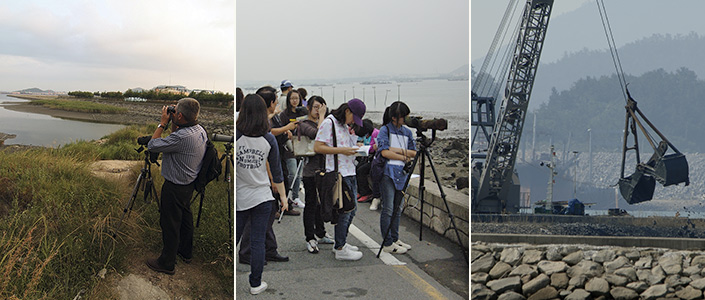
Photo © Birds Korea
How is this proposed development at Mokpo “sustainable” when it requires the destruction of an urban wetland, a decline in wetland biodiversity, and a loss of other wetland services and benefits? Even while Birds Korea works towards an alternative proposal (one based on wetland conservation, restoration, community pride and environmental education), wetland-infilling is taking place. Up to now, all requests to MLTM to conserve the site have simply been rejected.
In Incheon City too, the remaining tidal-flats at Song Do, another urban wetland, also look set to be “reclaimed”. According to Birds Korea survey data, the Song Do tidal-flats support at least 13 species of waterbird in Ramsar-defined internationally important concentrations. As well as being one of the nation’s most important sites for shorebirds, it holds both breeding Saunders’s Gull and breeding Black-faced Spoonbill, one of very few such sites in the world.
The initial approval to reclaim the remaining area of tidal-flat as part of the Incheon Free Economic Zone (IFEZ) was given in March 2009 - a mere five months after the passing of Resolution X.22 praising the nation for giving up tidal-flat reclamation!
The more detailed Incheon City plan will be released in October 2009, with reclamation slated to start in 2010. Any further loss of habitat there will inevitably lead to a further decline in the species dependent upon inter-tidal habitat. Again an evolving alternative vision is available and is being offered to decision-makers, this time by SAVE International in collaboration with other organisations. Is it not reasonable to ask: How does reclamation (past and present) of the Song Do tidal-flats reconcile with the words spoken at Ramsar? Or with the aims of the new Green Growth Strategy? Or with efforts to promote Song Do as an award-winning Eco-city?
Even if not yet designated as Ramsar sites, decision-makers at all levels have pledged publicly to conserve such important wetlands, and to manage them wisely as part of national and global sustainable development.
Why then do almost all of our nation’s wetlands, including in some cases Ramsar sites and other protected areas, remain imminently threatened by reclamation or infrastructure development? By dredging, dams, dykes, roads, bicycle lanes and perhaps even now by “entirely eco-friendly” railway lines (POSCO press release, October 2, 2009), as recently proposed for Suncheon Bay, designated as a Ramsar site in 2006.
Threats are not confined to inter-tidal or urban wetlands of course. The massive reclamation lakes and rice-fields at Seosan have for several years been host to a city-organised waterbird festival celebrating the presence of tens of thousands of geese and Baikal Teal Anas formosa. At the same time, a new resort development is being built across a large part of “Area B”, while ongoing road-widening and bridge-building along the length of “Lake A” threatens to increase disturbance there even further.
The massive flocks of Baikal Teal that were filmed at Seosan in November 2003 for the BBC’s wonderful Planet Earth (a series broadcast around the world), have already become smaller and stay for a shorter time each year - largely due to excessive disturbance.
And finally, there is the massive and potentially devastating Four Rivers “Restoration” Project.
Through exhibits set up in public spaces across the nation, proponents now boast that they will bring the four largest and many other smaller rivers in Korea back to life within three years. Overlooking that the rivers are already “alive”, and that many of the present water quality issues are a product of existing dams and estuarine barrages, some proponents claim that many of the nation’s problems will be solved through the construction of more dams, strengthening of dykes, and by dredging of river bottoms.
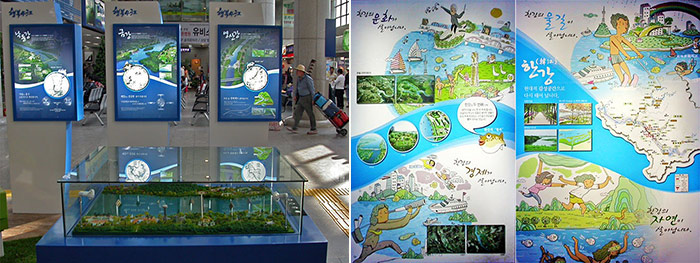
© Birds Korea
While the project is presented as a restoration project, nowhere in the expert literature does the construction of dams or river-dredging appear to be described as components of successful river restoration. Ramsar Recommendation 4.1 makes clear that: “Restoration schemes must not weaken efforts to conserve existing natural systems”, while Ramsar Resolution 8.16 provides further clear guidance: “To the extent that is possible, ecological engineering principles should be applied in preference to methods requiring hard structures or extensive excavation”.
River-dredging is further described in a paper in the Journal of Applied Ecology as an “ecologically ineffective restoration activity… costly and less effective ecologically because it has significant, short-term disruptive impacts and relies on regular, costly maintenance” (Palmer et al., 2005).
The Four Rivers “restoration”, affecting many hundreds of kilometres of river, aims to be completed in only 1000 Days (as part of the “1000 Days Promise”). Its frantic time-scale and scope reveals its true quality. By comparison, the 2009 London Rivers Action Plan in the UK (developed by a partnership of local and national government, expert bodies and NGOs) follows on from several decades of local experience of river enhancement and restoration. That Plan aims to restore just 15 kilometres of the Thames River tributaries - and this by 2015 (http://www.environmentalexpert.com/resultEachPressRelease.aspx?cid=6187&codi=43414).
We are one year on from Ramsar COP10. Now is the time for decision-makers and leaders of society, with the support of us all, to heed the call of the 2008 Changwon Declaration:
“We all Depend on Healthy Wetlands… Stop our Wetlands from being Degraded and Lost!”
References
- M. Palmer, E. Bernhardt, J. Allan, P. Lake, G. Alexander, S. Brooks, J. Carr, S. Clayton, C. Dahm, J. Follstead Shah, D. Galat, S, Loss, P. Goodwin, D. Hart. B. Hassett, R. Jenkinson, G. Kondolf, R. Lave. J. Meyer, T. O/Donnell, L. Pagan & E. Sudduth. 2005. Standards for Ecologically Successful River Restoration. Forum, Journal of Applied Ecology. Published by the British Ecological Society.
Research
Field work continues on seabirds at sea, and on the offshore islands of Gageo and Socheong, as well as monitoring of bird numbers at the Mokpo Namhang Urban Wetland. Data and analysis will continue throughout this year and next, and will form a core part both of our advocacy work and of the “Blueprint for the Conservation of the Avian Biodiversity of the South Korean Yellow Sea” which (funds allowing) we will publish in early October 2010 in the run-up to the Convention of Biological Diversity COP10 (Nagoya, Japan).
For example, bird counts have been made regularly at the Mokpo Namhang Urban Wetland since 2006 (when coverage extended to 76% of days of the year) and is still ongoing, with 355 days of coverage in 2008. In total some 139 species have been recorded there to date, with most numerous species including Common Shelduck Tadorna tadorna (peak count of 515) and Dunlin Calidris alpina (peak count of 619), and records of globally threatened and near-threatened species including Black-faced Spoonbill, Chinese Egret Egretta eulophotes, Asian Dowitcher Limnodromus semipalmatus and Saunders’s Gull and an additional five National Natural Monuments. While it has been claimed by reclamation proponents that the two lagoons now being in-filled is “not wetland” (in a meeting between Birds Korea and Mokpo MLTM officials in September 2008), the analysis conducted on the data by Birds Korea reveals that these two lagoons actually supported between 50-77% of the birds at the site in ten months of the year - including for example almost all of the Common Shelduck, a species ecologically dependent in winter on wetlands, most especially estuaries and tidal-flats. Selected data and analysis for the years 2006-2008 can be found at: http://www.birdskorea.org/Our_Work/Research/Mokpo/BK-RES-Counting-data.shtml
Planning and Design
We are still seeking ways to improve the conservation status of the Mokpo Namhang Urban Wetland. In mid-September, we held a meeting with the Vice-chair of the Mokpo City Council, Mr. Kang Sung-Hwi, followed by a meeting with the Mokpo chapter of the Korean Federation for Environmental Movements (KFEM). We are presently proposing to hold further meetings and a workshop in December to develop an alternative proposal for the site that can be submitted to the Ministry of Land, Transport and Maritime Affairs. In addition, we have also been active in supplying information to SAVE International in support of their evolving alternative land use plan for the Song Do tidal-flats in Incheon. The first draft of their vision was presented to Incheon City in mid-October by Green Incheon, an organisation deeply involved in efforts to conserve that internationally important wetland.
Awareness-raising and Education
The Birds Korea shorebird education book, “Wings Across the Ocean”, has now been published. Thanks to funding from the Nakdong Estuary Eco-centre, to the wonderful generosity of a large number of people (some who donated use of their images, and others like the Queensland Wader Studies Group whose kind donation is enabling our shorebird conservation work to continue), as well as to the hard work of the Donga Printing & Design publishing company in Busan, this small book is packed full of beautiful images and valuable information. We have already sent out copies to most of the photographers (for the remainder: with apologies - your copy will soon be in the post!), and also provided copies to a broad range of people, including teachers at one school in Korea and another in New Zealand, as well as several activists who regularly conduct shorebird-focused environmental education programs. Further copies will be mailed out in the coming weeks, and this book can also be ordered within Korea from Birds Korea, the Nakdong Estuary Eco-centre.
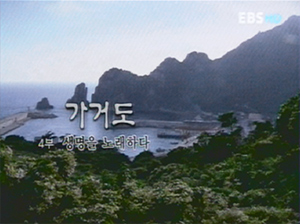
broadcast nationally on August 27th.
We are now discussing the development of further education materials. Teachers, educators, artists and writers, those with language skills: Please, even if you do not know much about the environment or about birds (yet!), we are waiting to hear from you and look forward to working with you!
Other awareness-raising work during the period under review has included e.g. a presentation on environmental sustainability and bird conservation to university students in Wonju; a birdwatching day at the Mokpo Namhang Urban wetland; and work with media. Media work during August and September included contributing to a documentary on Gageo Island for EBS TV (broadcast nationally in late August) and interviews with the Financial Times and Public Radio Chicago (the last focused on the problems of reclamation at Song Do). For some examples of coverage of our work in the media, please go to:
http://www.birdskorea.org/News/BK_News/Press_coverage/BK-PR-Presscoverage.shtml
Records have been collated by Tim Edelsten et al. of observations by Birds Koreans and from records posted on other leading birding websites, mostly especially the websites of the National Parks Migratory Bird Research Centre, KWBS and BirdDB. Nomenclature, order and status codes follow The Birds Korea Checklist (2009).
Black-faced Spoonbill Platalea minor EN, S4, W5
A survey of mainland coastal sites by members of KWBS from August 21st-23rd found 450 at a total of 13 sites.
White-tailed Eagle Haliaeetus albicilla W4, RV1
One immature photographed at Gwongchonshubji, Gyeonngi Province, on August 8th by John Roberts & Victor Stanger is an exceptional mainland record in the summer months.
Baillon’s Crake Porzana pusilla P5 NN2
Approximately fifteen on Heuksan Island, Jeollanam Province, on September 14th (Park Jong-Gil) is easily the highest national day count of this species known to Birds Korea.
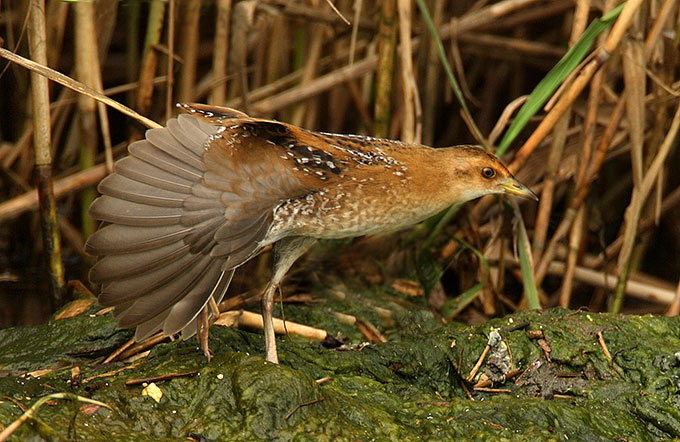
Long-billed Dowitcher Limnodromus scolopaceus V1
One was photographed at Namdaechon in Gangneung, Gangwon Province in late September (further details witheld)
Asiatic Dowitcher Limnodromus semipalmatus NT, V1
One photographed and seen by multiple observers on September 5th at Namyang Bay, Gyeonggi Province, was still present the following day (Robin Newlin).
Nordmann’s Greenshank Tringa guttifer EN, P4
At Namyang Bay three were present on September 5th (BirdDb), with one present on September 7th when seen by Tim Edelsten. On September 8th, four were photographed there by Shim Kyu-Sik. At Yubu Island, 15 were counted on September 19th by Nial Moores.
Spoon-billed Sandpiper Eurynorhynchos pygmeus CR, P5
One of two present was photographed at Yubu Island in the Geum Estuary on August 21st by Kim Seok-Yee. ’>Four were seen at the Nakdong Estuary, Busan, on September 13th by Jeon Shi-Jin, Kim Hyangee & Kim Beom-Su. At Yubu Island on September 19th, a total of seven were counted by Nial Moores and other observers including Chai Seung-Hoon.
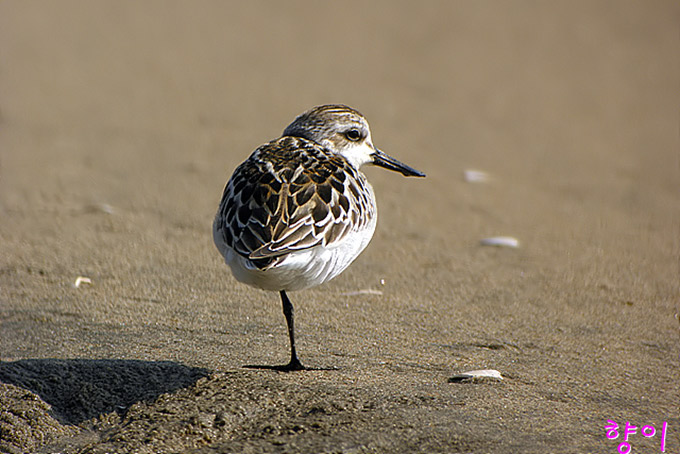
Brunnich’s Guillemot Uria lomvia V1, W5
A guillemot, most likely a Brunnich’s, was seen by Nial Moores and D.O.M at sea between Incheon and Socheong Island on September 21st. This is an exceptional date and location, being the first sighting of a large alcid species in the Korean Yellow Sea. Possibly the same individual was seen by Tim Edelsten in the same area on October 1st.
Red-backed Shrike Lanius collurio V2
A juvenile on Gageo Island, Jeollanam Province, on September 29th was seen side by side with a second individual (either a pure Red-backed Shrike or one with some hybrid influence) on September 30th, and both were photographed (Nial Moores). There are only two confirmed previous records of this species in Korea, both also from south-western islands in September. However, this total excludes several individuals believed to be of hybrid origin. A review of all records is required based on a greater understanding of the appearance and variability of Red-backed Shrike from the east of their range,
Red-headed Bunting Emberiza bruniceps V2
One or more probably two large buntings (either Emberiza bruniceps or E. melanocephala) were found on Gageo Island on September 27th. On the 28th one E. bruniceps remained and was photographed, last being seen on September 30th (Nial Moores).
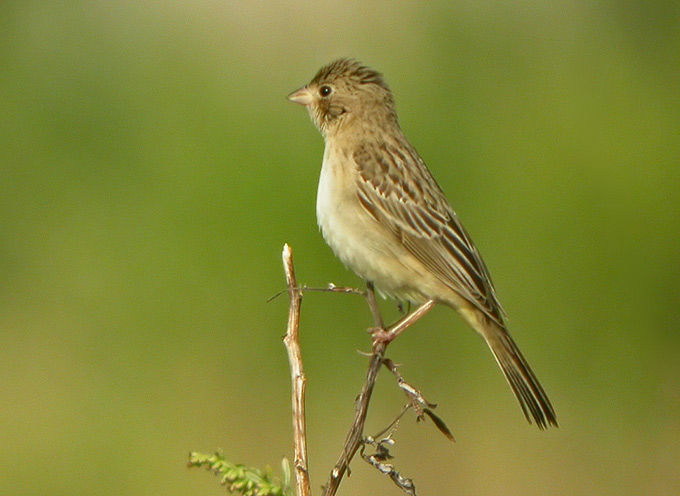
Belated News
Japanese Night Heron Gorsachius goisagi EN, V1
An excellent discovery by researchers on Jeju Island in the summer was a breeding pair of the globally Endangered Japanese Night Heron: the first national breeding record and perhaps only the second breeding record outside of Japan (the 2009 BirdLife International Fact Sheet for the species states that it has bred once in Taiwan). This is the most noteworthy of several important breeding records made during the summer months, which we hope to provide more details of at a later date.
Finally, a gentle reminder to all of our members (past and present) living in Korea. Birds Korea depends entirely on the support of our members and volunteers. Donations and domestic membership fees are vital to us! Please renew your membership (annual membership fee is only 30,000 Korean won; and life-time membership only 150,000 Korean won at this time), and help us to help the birds!
This update was prepared through the joint efforts of Nial Moores, Kim Sona, Andreas Kim, Park Meena, Charles Moores, and Tim Edelsten, with contributions by many members.
Birds Korea, October 12th 2009.




